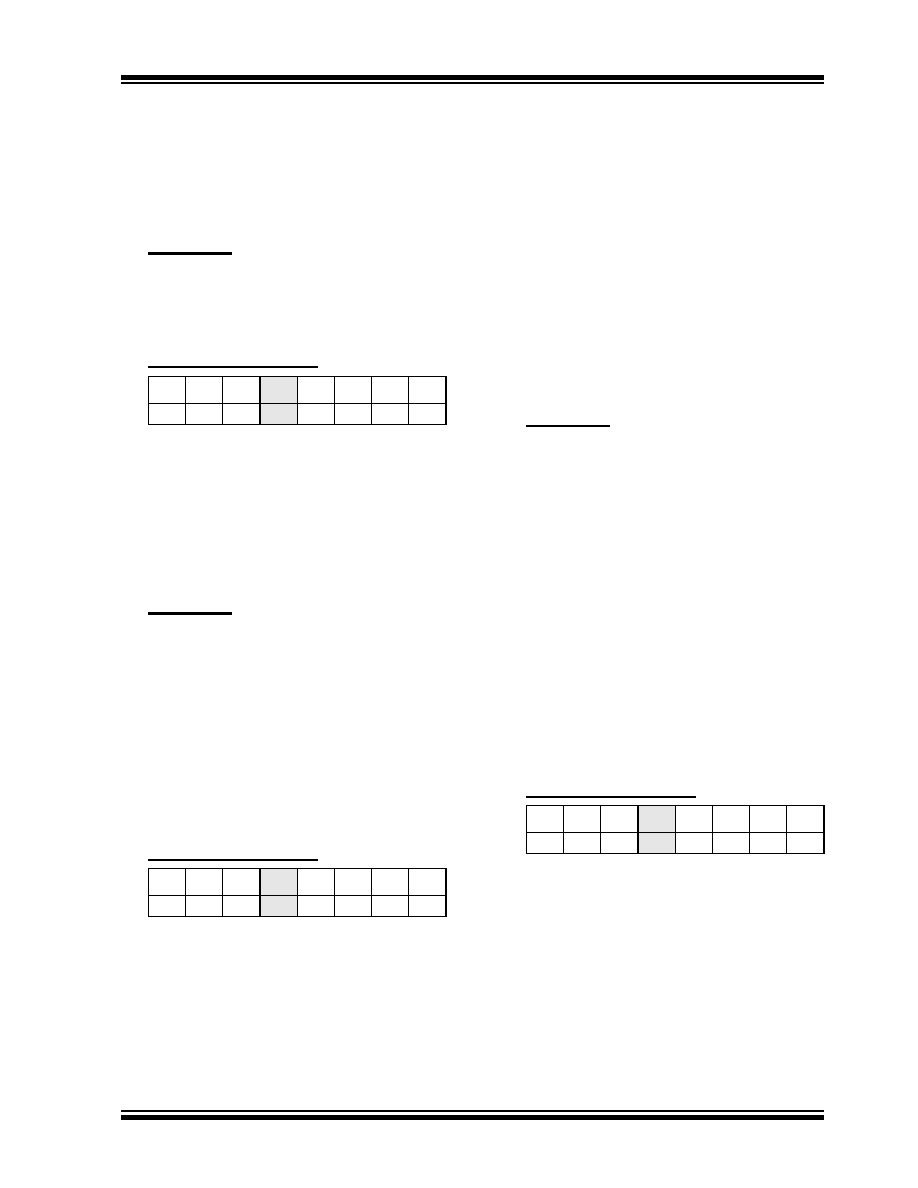- 您現(xiàn)在的位置:買(mǎi)賣(mài)IC網(wǎng) > PDF目錄11581 > ENC28J60T/SS (Microchip Technology)IC ETHERNET CTRLR W/SPI 28SSOP PDF資料下載
參數(shù)資料
| 型號(hào): | ENC28J60T/SS |
| 廠(chǎng)商: | Microchip Technology |
| 文件頁(yè)數(shù): | 8/12頁(yè) |
| 文件大小: | 0K |
| 描述: | IC ETHERNET CTRLR W/SPI 28SSOP |
| 標(biāo)準(zhǔn)包裝: | 2,100 |
| 控制器類(lèi)型: | 以太網(wǎng)控制器,MAC/10Base-T |
| 接口: | SPI |
| 電源電壓: | 3.1 V ~ 3.6 V |
| 電流 - 電源: | 160mA |
| 工作溫度: | 0°C ~ 70°C |
| 安裝類(lèi)型: | 表面貼裝 |
| 封裝/外殼: | 28-SSOP(0.209",5.30mm 寬) |
| 供應(yīng)商設(shè)備封裝: | 28-SSOP |
| 包裝: | 帶卷 (TR) |
| 配用: | DM163024-ND - BOARD DEMO PICDEM.NET 2 AC164123-ND - BOARD DAUGHTER ETH PICTAIL PLUS AC164121-ND - BOARD DAUGHTER PICTAIL ETHERNET |

2010 Microchip Technology Inc.
DS80349C-page 5
ENC28J60
11. Module: PHY LEDs
When the PHLCON register is programmed to
output the duplex status and collision activity on
the same LED (‘1110’), only the duplex status will
be displayed (i.e., the LED will be illuminated when
in Full-Duplex mode and extinguished when in
Half-Duplex mode, regardless of collision activity).
Work around
When Half-Duplex mode is being used, program
the PHLCON register’s LxCFG bits with ‘0011’ to
display the collision status. When Full-Duplex mode
is being used, program the PHLCON register’s
LxCFG bits with ‘0101’ to display the duplex status.
Affected Silicon Revisions
12. Module: Transmit Logic
In Half-Duplex mode, a hardware transmission
abort caused by excessive collisions, a late colli-
sion or excessive deferrals, may stall the internal
transmit logic. The next packet transmit initiated by
the
host
controller
may
never
succeed
(ECON1.TXRTS will remain set indefinitely).
Work around
Before attempting to transmit a packet (setting
ECON1.TXRTS), reset the internal transmit logic
by setting ECON1.TXRST and then clearing
ECON1.TXRST. The host controller may wish to
issue this Reset before any packet is transmitted
(for simplicity), or it may wish to conditionally reset
the internal transmit logic based on the Transmit
Error Interrupt Flag (EIR.TXERIF), which will
become set whenever a transmit abort occurs.
Clearing ECON1.TXRST may cause a new trans-
mit error interrupt event (EIR.TXERIF will become
set). Therefore, the interrupt flag should be cleared
after the Reset is completed.
Affected Silicon Revisions
13. Module: PHY
When transmitting in Half-Duplex mode with some
link partners, the PHY will sometimes incorrectly
interpret a received link pulse as a collision event. If
less than, or equal to, MACLCON2 bytes have been
transmitted when the false collision occurs, the
MAC will abort the current transmission, wait a ran-
dom back-off delay and then automatically attempt
to retransmit the packet from the beginning – as it
would for a genuine collision.
If greater than MACLCON2 bytes have been
transmitted when the false collision occurs, the
event will be considered a late collision by the
MAC and the packet will be aborted without retry-
ing. This causes the packet to not be delivered to
the remote node. In some cases, the abort will fail
to reset the transmit state machine.
Work around
Implement a software retransmit mechanism
whenever a late collision occurs.
When a late collision occurs, the associated bit in
the transmit status vector will be set. Also, the
EIR.TXERIF bit will become set, and if enabled,
the transmit error interrupt will occur.
If the transmit state machine does not get reset,
the ECON1.TXRTS bit will remain set and no
transmit interrupt will occur (the EIR.TXIF bit will
remain clear).
As a result, software should detect the completion
of a transmit attempt by checking both TXIF and
TXERIF. If the Transmit Interrupt (TXIF) did not
occur, software must clear the ECON1.TXRTS bit
to force the transmit state machine into the correct
state.
The logic in Example 1 (following page) will
accomplish a transmission and any necessary
retransmissions with a maximum retry abort.
Affected Silicon Revisions
B1
B4
B5
B7
XX
X
B1
B4
B5
B7
XX
X
B1
B4
B5
B7
X
相關(guān)PDF資料 |
PDF描述 |
|---|---|
| V150A24C400BL | CONVERTER MOD DC/DC 24V 400W |
| MCP2510T-I/SO | IC CAN CONTROLLER W/SPI 18-SOIC |
| V150A24C400B3 | CONVERTER MOD DC/DC 24V 400W |
| V150A24C400B | CONVERTER MOD DC/DC 24V 400W |
| V150A12C400BG3 | CONVERTER MOD DC/DC 12V 400W |
相關(guān)代理商/技術(shù)參數(shù) |
參數(shù)描述 |
|---|---|
| ENC2D-B16-L00128L | 制造商:BOURNS 制造商全稱(chēng):Bourns Electronic Solutions 功能描述:EN - Rotary Optical Encoder |
| ENC2D-B20-L00128L | 制造商:BOURNS 制造商全稱(chēng):Bourns Electronic Solutions 功能描述:EN - Rotary Optical Encoder |
| ENC2D-C16-L00128L | 制造商:BOURNS 制造商全稱(chēng):Bourns Electronic Solutions 功能描述:EN - Rotary Optical Encoder |
| ENC2D-D16-L00128L | 制造商:BOURNS 制造商全稱(chēng):Bourns Electronic Solutions 功能描述:EN - Rotary Optical Encoder |
| ENC2J-B16-L00025 | 制造商:未知廠(chǎng)家 制造商全稱(chēng):未知廠(chǎng)家 功能描述:OPTICAL INTREMNETA ENCDES |
發(fā)布緊急采購(gòu),3分鐘左右您將得到回復(fù)。